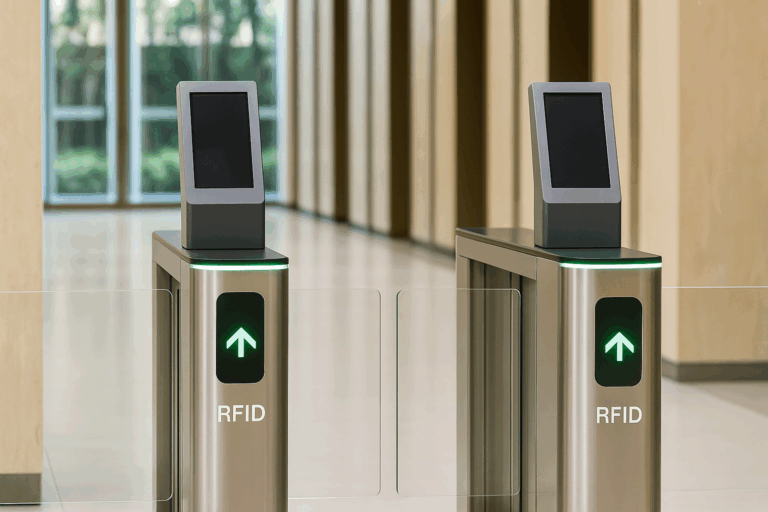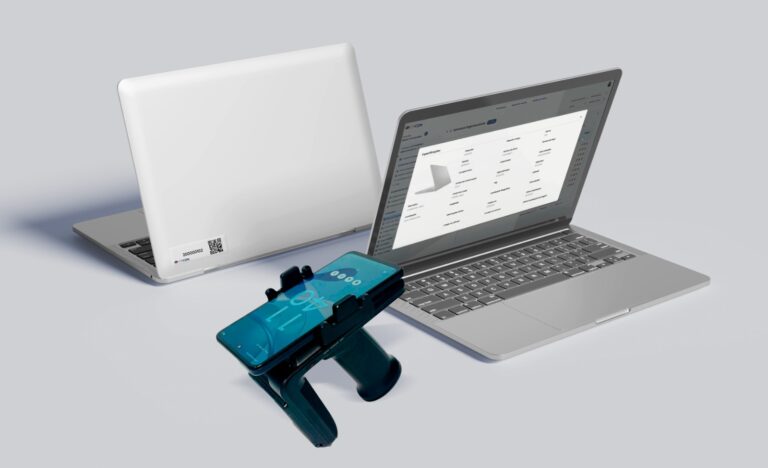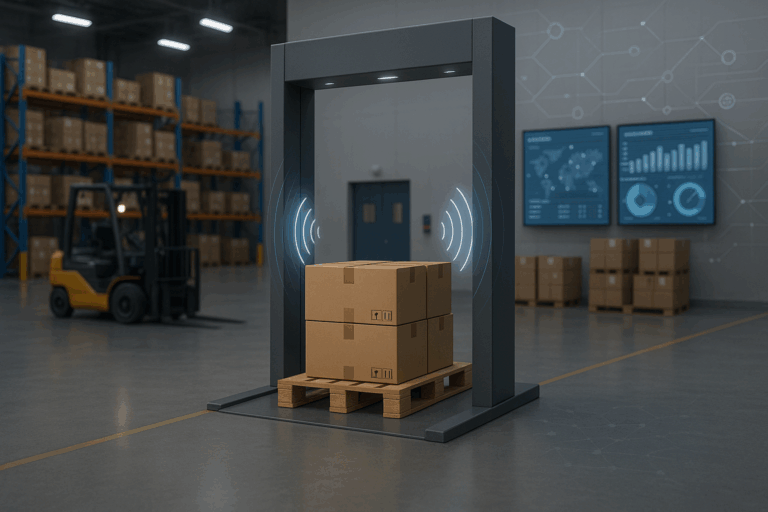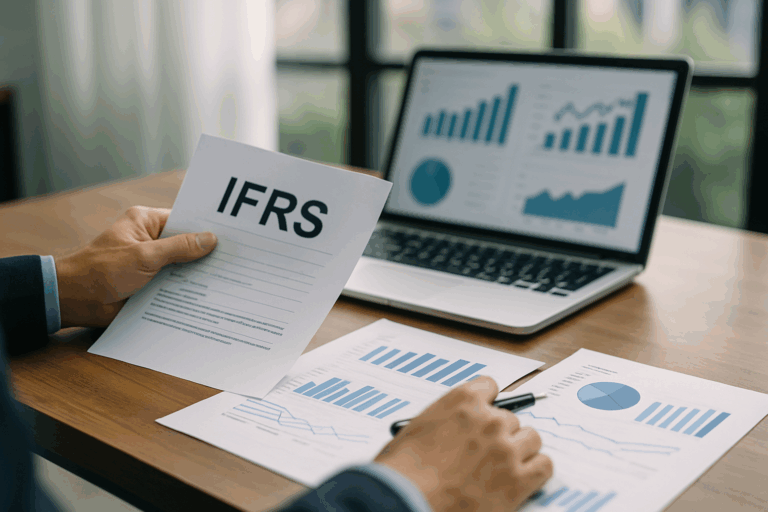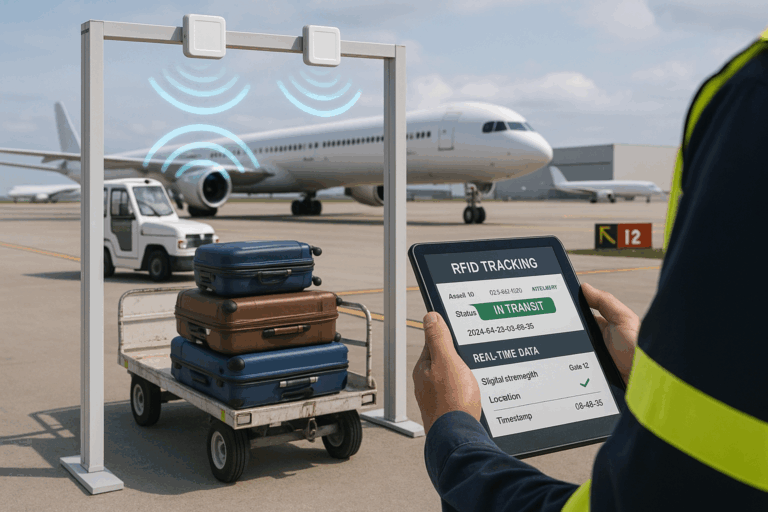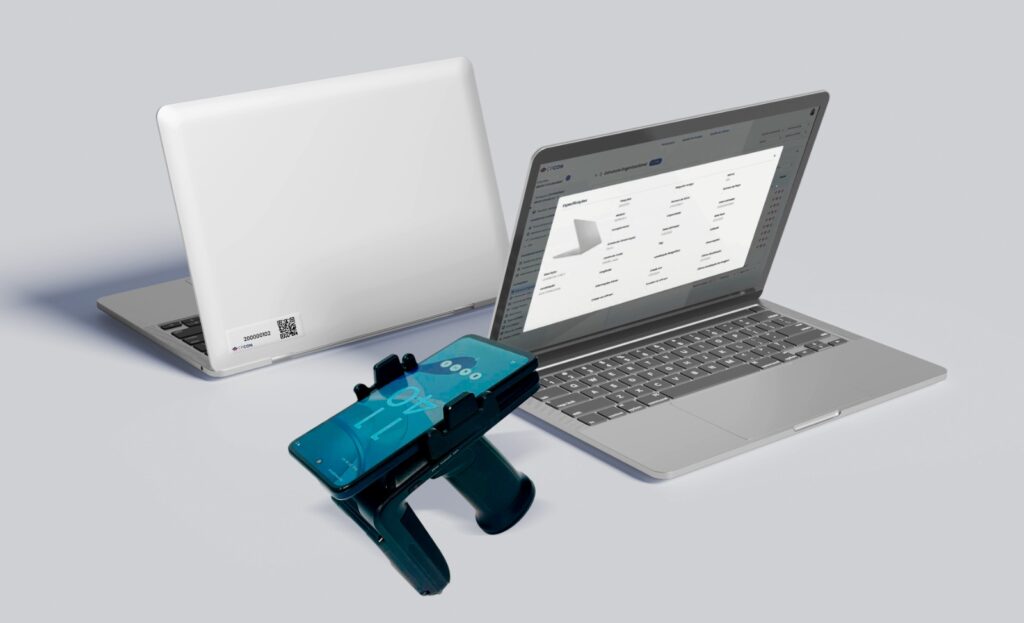Table of Contents
ToggleExplore each phase of the fixed asset lifecycle and discover how technology, governance, and data-driven decisions can transform your asset performance and business value
What is the lifecycle of a fixed asset—and why should CFOs and controllers care?
The fixed asset lifecycle isn’t just a financial process. It’s a strategic framework that defines how an organization plans, acquires, tracks, maintains, depreciates, and finally disposes of its long-term assets. And in 2025, mastering this lifecycle has become essential for companies that want to ensure compliance, cut unnecessary costs, and make smarter investment decisions.
From the moment an asset is budgeted to the moment it’s written off or replaced, each phase impacts your bottom line—directly or indirectly. Poor control over asset data can lead to inaccurate depreciation, tax penalties, audit failures, and even missed opportunities for performance optimization. On the other hand, companies that manage their asset lifecycle strategically gain better visibility, unlock capital, and reduce risks.
In this article, you’ll learn how to map and manage the entire fixed asset lifecycle—from acquisition to disposal—using technology, governance, and real-time data. We’ll also explore how RFID, ERP integration, predictive maintenance, and sustainability practices are transforming asset control across industries.
Whether your company operates hundreds of machines or thousands of IT devices across multiple locations, this guide is your practical blueprint for modern fixed asset management.

What Is the Fixed Asset Lifecycle and Why It Matters
What exactly is the fixed asset lifecycle?
The fixed asset lifecycle refers to the entire journey of an asset—from the initial planning and purchase to its daily use, maintenance, revaluation, and final disposal. It’s the set of steps that ensure an asset is properly accounted for, optimized for use, and retired at the right time with compliance and strategic insight.
Think of it as the “life story” of your company’s machines, equipment, vehicles, buildings, or IT systems. Each stage comes with its own procedures, costs, and compliance rules—making it critical to monitor them continuously.
Why is managing this lifecycle so important?
Because fixed assets aren’t just expenses—they’re investments.
Poorly managed assets can drain your resources without you even realizing it. You may be overpaying on maintenance, missing out on depreciation tax benefits, or holding on to obsolete equipment that reduces productivity.
On the flip side, companies that manage the full asset lifecycle gain:
- Accurate financial reporting
- Compliance with accounting standards (like IFRS, GAAP, or IAS)
- Better use of capital and operational resources
- Reduced risks and losses
- Smarter decisions about when to maintain, upgrade, or replace assets
In short: lifecycle management turns static assets into strategic levers.
How does the lifecycle go beyond accounting?
Many companies treat asset management as a back-office accounting task. But the truth is: it’s a business-wide issue. Controllers, operations managers, and CFOs all rely on accurate asset data to plan budgets, justify investments, and reduce costs.
Modern lifecycle management connects accounting with strategic decision-making. It helps your team answer questions like:
- Is it cheaper to repair this machine or replace it?
- How much value are we losing to asset downtime?
- Are we in compliance with audit and tax rules?
- Can this equipment be repurposed or sold?
Why is this relevant now, in 2025?
Because business operations are getting more complex—and assets are becoming more digital, mobile, and interconnected. Traditional spreadsheets can’t keep up. Compliance standards are tightening. And investors are demanding transparency, especially around ESG practices and lifecycle costs.
In this new reality, asset lifecycle management is no longer optional. It’s a key part of how companies scale sustainably, avoid penalties, and gain a competitive edge.
Learn more:
The 6 Key Phases of the Fixed Asset Lifecycle
Understanding the fixed asset lifecycle starts by mapping its six essential phases. Each step plays a critical role in ensuring accuracy, compliance, and performance. Let’s break it down.
1. Planning and Acquisition
What happens during this phase?
This is where everything begins. Your team identifies the need for a new asset, evaluates options, sets a budget, and defines acquisition criteria. But it’s not just about the purchase price.
Why is Total Cost of Ownership (TCO) important here?
TCO includes not only the initial cost, but also long-term expenses—such as installation, maintenance, training, insurance, and energy consumption. Smart acquisition means thinking beyond upfront numbers.
Best practice: Use data from past asset performance to justify your investment and align it with your company’s strategic goals.
2. Asset Activation and Accounting Recognition
What does it mean to “activate” an asset?
After purchase, the asset is received, tagged (often with a barcode or RFID), and entered into the fixed asset register. It’s officially “on the books”—which means depreciation starts now.
Why is accounting accuracy critical at this stage?
Incorrect classification or valuation can lead to financial misstatements, audit risks, and tax issues. This is where compliance with IFRS, GAAP, and local standards begins.
Key tools: ERP and fixed asset management software help automate asset registration and ensure consistent accounting treatment.
3. Operation and Utilization
How do you ensure your assets are being used efficiently?
Once the asset is active, it enters its operational phase. Companies must monitor how it’s used, by whom, and where. High-value or mobile assets (like IT devices or vehicles) especially demand visibility.
Why does underutilization hurt performance?
Idle or misallocated assets waste capital and reduce your ROI. Lifecycle tracking enables reallocation or disposal before value is lost.
Pro tip: RFID and RTLS technologies provide real-time asset tracking, reducing losses and improving accountability.
4. Preventive and Predictive Maintenance
Is it better to repair before something breaks?
Always. Preventive maintenance schedules extend asset life and reduce downtime. But predictive maintenance—powered by IoT and AI—goes a step further by forecasting failures based on usage patterns.
What’s the business impact of maintenance strategy?
Efficient maintenance lowers operational costs, increases asset availability, and helps meet compliance with safety and performance standards.
Tip for 2025: Companies are moving from calendar-based maintenance to data-driven strategies.
5. Revaluation, Depreciation, and Adjustments
What financial activities take place here?
Assets are depreciated over time according to accounting rules. However, market value, usage, or damage may require adjustments or revaluations.
How does this affect compliance and reporting?
Fair value accounting (IFRS 13), impairment (IAS 36), and other standards may require your company to revisit book values regularly—especially during audits or M&A processes.
Why it matters: Accurate revaluation protects your financial integrity and supports better investment planning.
6. Disposal and Replacement
When and how should you retire an asset?
Assets should be decommissioned once they reach the end of their useful life, become obsolete, or are no longer cost-effective to maintain.
What are the risks of poor disposal practices?
Incorrect write-offs can trigger tax penalties. Improper disposal (especially of IT assets) can also pose environmental or data security risks.
Modern approach: Dispose sustainably. Companies increasingly incorporate ESG guidelines into disposal policies—through recycling, resale, or donation.

Emerging Technologies That Enhance the Lifecycle
The way companies manage fixed assets is changing—and fast. Spreadsheets and manual tracking no longer deliver the visibility or accuracy needed to meet modern business demands. That’s why technology has become the engine of smart, scalable asset lifecycle management.
Let’s explore the key innovations driving this transformation—and how they empower finance and operations teams to control every phase of the asset journey.
RFID and RTLS: Real-Time Asset Visibility
What if you could track every asset in real time, without manual input?
That’s what RFID (Radio-Frequency Identification) and RTLS (Real-Time Location Systems) deliver. These technologies automate inventory processes and ensure assets don’t go missing—or sit idle without you knowing.
RFID tags are applied to assets and scanned automatically as they move through checkpoints like warehouses, offices, or hospitals. With RTLS, you go even further: you can map the exact location of equipment in large facilities, monitor usage patterns, and reduce search time dramatically.
The result?
- 99%+ inventory accuracy
- Faster audits
- Lower operational costs
- Better compliance with internal controls
Case in point: A study by the American Journal of Managed Care shows that RFID implementation in healthcare reduced asset shrinkage by 25% and improved compliance reporting across departments.
ERP Integration: One Source of Truth
Why integrate fixed asset management with your ERP system?
Because silos cause mistakes. When your asset data sits in isolated spreadsheets or standalone tools, your finance, operations, and audit teams work with inconsistent numbers—and that’s risky.
ERP integration means that:
- Purchase orders generate asset records automatically
- Depreciation flows into accounting reports
- Disposal triggers tax adjustments instantly
- Auditors have a centralized, real-time view of all changes
Whether you use SAP, Oracle, NetSuite or another system, an integrated approach streamlines operations and supports faster, data-driven decisions.
Predictive Analytics and Artificial Intelligence
Is your company fixing assets before they break—or after?
AI and predictive analytics help organizations move from reactive maintenance to proactive strategies. By analyzing sensor data, usage logs, and historical failures, AI models can predict when a machine is likely to fail—so you can fix it before downtime occurs.
And it’s not just about maintenance. AI can also:
- Optimize asset allocation across sites
- Recommend ideal timing for replacement
- Detect anomalies that signal fraud or misuse
- Calculate dynamic depreciation based on real usage
These technologies are reshaping how CFOs approach lifecycle planning—combining financial logic with real-time operations data.
McKinsey & Company reports that predictive maintenance powered by AI can reduce unplanned downtime by up to 50% and extend asset life by 20%: Read the report.
Business Intelligence (BI) Dashboards and KPIs
What if your leadership team could see the entire asset landscape on one screen?
BI dashboards turn complex lifecycle data into simple, actionable insights. They consolidate data from ERP, RFID systems, maintenance logs, and financial reports—helping teams make better, faster decisions.
Key metrics tracked include:
- Asset utilization rate
- Maintenance cost per unit
- Asset return on investment (ROA)
- Days in service vs. downtime
- Environmental impact score (ESG)
These insights enable finance leaders to align capital investments with business goals—while ensuring full compliance and risk control.
Strategic KPIs for Asset Management
You can’t improve what you don’t measure. That’s why tracking the right KPIs (Key Performance Indicators) is essential to unlocking the full value of your fixed assets.
When properly chosen, these metrics turn raw data into decisions—helping CFOs, controllers, and operations leaders gain clarity over costs, efficiency, risks, and investment potential.
Return on Assets (ROA)
What is it?
ROA measures how efficiently your company turns its assets into profit. It’s a core financial KPI that shows whether your fixed assets are helping—or hurting—your bottom line.
Formula:
ROA = Net Income / Average Total Assets
Why it matters:
Low ROA could mean you’re investing in assets that aren’t delivering enough value. It might signal overcapacity, poor utilization, or outdated equipment consuming resources with little return.
Asset Utilization Rate
How much are your assets actually being used?
This KPI shows the percentage of time an asset is actively operating versus sitting idle. For machinery, vehicles, and IT hardware, this insight is critical.
Why it matters:
Underutilized assets lock up capital and increase maintenance costs. Identifying idle or underused equipment allows for reallocation, optimization, or disposal—freeing up space and budget.
Insight: According to IBM, increasing asset utilization by just 10% can lead to a 5%–15% reduction in total cost of ownership (TCO).
Maintenance Cost per Asset
Are you spending too much to keep things running?
Tracking maintenance costs across the lifecycle helps you compare performance by asset class or location. It also reveals when it’s time to repair, replace, or upgrade.
Why it matters:
Unexpected maintenance spikes may indicate deeper problems: faulty usage, poor-quality equipment, or lack of preventive strategy. Early detection protects both your budget and your operations.
Lifecycle Cost Analysis (LCCA)
How do you know which asset is really the better choice?
LCCA looks at the total cost of owning and operating an asset over its full lifecycle—not just the purchase price. It includes:
- Acquisition
- Operation
- Maintenance
- Replacement or disposal costs
Why it matters:
It allows your team to make smarter investment decisions—especially when comparing leasing vs. buying, or choosing between vendors with different cost structures.
Compliance and Audit Readiness Score
Can you quickly produce audit-ready asset reports?
Tracking your compliance health is essential to reducing audit risk. This KPI combines:
- Accuracy of depreciation schedules
- Timeliness of asset registration
- Documentation of maintenance and disposal
- Adherence to IFRS, GAAP, and ESG reporting
Why it matters:
The more complete and current your records, the less risk you face from penalties, losses, or reputational damage during audits or due diligence.

Risk, Compliance, and ESG in Fixed Asset Management
Fixed asset management isn’t just about numbers—it’s about trust. Inaccurate records, poor controls, or unsustainable disposal practices can quickly evolve into legal, financial, or reputational risks.
In today’s regulatory and ESG-conscious environment, companies are expected to not only manage assets efficiently, but also prove that they do so with transparency and responsibility.
Let’s explore how lifecycle control supports risk reduction, audit compliance, and ESG alignment.
Internal Controls That Prevent Losses
What risks are hidden in poor asset tracking?
Fraud, theft, misplacement, double counting, and ghost assets (items that no longer exist but are still on the books). Without robust internal controls, these risks go unnoticed—until audits or losses expose them.
How does lifecycle management reduce this?
- RFID tagging ensures real-time location accuracy
- Audit trails log every change in asset status
- Scheduled reviews prevent data decay and valuation gaps
Compliance with Financial and Environmental Regulations
Which accounting standards apply to assets?
Most companies must comply with:
- IFRS (International Financial Reporting Standards) – especially IAS 16, IFRS 13, IFRS 16
- GAAP (Generally Accepted Accounting Principles)
- Local tax codes and audit frameworks
- Industry-specific environmental laws
Why is compliance so complex?
Because each lifecycle stage has reporting requirements: acquisition (fair value), depreciation, impairment, revaluation, disposal. Any mismatch leads to tax risks or audit flags.
ESG and the Sustainable Disposal of Assets
How do fixed assets affect your ESG strategy?
Assets have an environmental and social footprint. Disposing of IT equipment, machinery, or industrial materials without proper care can cause pollution, data leaks, or regulatory violations.
What does a sustainable disposal policy include?
- Certified recycling or reuse channels
- Secure data erasure and hardware destruction
- Donation to nonprofits or redeployment within the company
- Documentation for ESG audits and stakeholder reports
Insight: A 2024 report by PwC highlights that companies with formal asset disposal policies score 25% higher on ESG ratings.
The Reputation Factor
What happens when asset mismanagement hits the headlines?
It can erode investor confidence, delay M&A deals, or spark legal investigations. Public perception matters—especially when sustainability and transparency are part of your brand promise.
Why lifecycle governance matters:
By managing asset risk proactively and documenting each phase, you show stakeholders that your company leads with responsibility—not reactivity.
Lease vs. Buy: Strategic Analysis for Decision Makers
When it’s time to acquire a new asset—whether a vehicle fleet, IT infrastructure, or industrial equipment—finance leaders face a classic question: should we buy or lease?
There’s no universal answer. The best decision depends on your company’s cash flow, asset strategy, tax position, and long-term goals. What matters is having clear visibility over the financial, operational, and regulatory impacts of each option.
Let’s break it down.
Leasing: Flexibility and Short-Term Efficiency
What are the advantages of leasing?
- Lower upfront cost
- Easier access to the latest technology
- No asset depreciation on your balance sheet (depending on lease type)
- Potential off-balance sheet treatment (in limited cases)
Leasing is attractive when your asset needs may change quickly, or when you’re focused on preserving cash and avoiding long-term commitments.
When is leasing a risk?
- Higher total cost over time
- Complex contractual terms
- Less control over asset customization or resale
- Mandatory capitalization under IFRS 16 (in most cases)
Important note: IFRS 16, which came into effect globally in 2019, requires most leases to be recorded as assets and liabilities—ending the traditional “off balance sheet” treatment. This change impacts key financial ratios and demands accurate lifecycle tracking.
Buying: Control, Capitalization, and Tax Efficiency
What are the benefits of buying an asset?
- Full ownership and control
- Capitalization on the balance sheet
- Depreciation deductions for tax purposes
- Greater resale or reuse potential at end of life
Ownership is ideal when the asset is critical to your operations, has a long usable life, or is tailored to your core processes.
When can buying backfire?
- High upfront investment
- Exposure to obsolescence
- Increased maintenance responsibilities
- Lower liquidity in times of financial stress
Buying ties capital to long-term assets—so it’s important to monitor TCO and asset performance consistently.
How to Decide: Use Lifecycle and Financial Modeling
What tools help with the lease vs. buy decision?
- Total Cost of Ownership (TCO) analysis
- Net Present Value (NPV) comparison
- Payback period and ROI modeling
- Lifecycle cost forecasts including maintenance, insurance, and disposal
And what about compliance?
Your choice must align with IFRS, GAAP, and local tax rules. Misclassification can lead to audit issues, reporting errors, or delayed disclosures—especially in listed companies or those undergoing due diligence.
The CFO’s Role in Lifecycle Asset Strategy
Fixed assets aren’t just a cost center. In the hands of a strategic CFO, they become a tool for value creation, operational resilience, and sustainable growth.
As asset complexity increases and regulations evolve, finance leaders are stepping beyond traditional accounting. They now guide decisions on investment timing, asset performance, risk management, and capital efficiency—all through the lens of lifecycle data.
Here’s how the CFO adds strategic power to every phase of asset management.
From Balance Sheet to Business Model
How does asset strategy affect financial health?
Every decision related to fixed assets—whether it’s acquisition, leasing, maintenance, or disposal—has a direct impact on:
- EBITDA and ROA
- Capital expenditure (CapEx) vs. operating costs (OpEx)
- Cash flow and financing needs
- Compliance with audit and tax regulations
The CFO ensures that these decisions are not made in isolation, but in line with the company’s broader financial and operational goals.
Why is this important now?
Because fixed assets often represent 30–70% of a company’s total capital investment. In times of volatility, they can become either a burden—or a competitive advantage.
Leading with Data and Lifecycle Intelligence
What’s the CFO’s role in digital transformation?
CFOs are no longer just financial stewards—they are data champions. By leveraging BI dashboards, ERP integrations, and predictive analytics, they can:
- Forecast asset needs with greater accuracy
- Align investments with ROI goals
- Detect cost inefficiencies and underutilization
- Support ESG disclosures with asset-level data
This shift turns fixed asset control into a board-level conversation—backed by data, not assumptions.
Governance, Transparency, and Stakeholder Confidence
How do CFOs strengthen trust with regulators and investors?
Clear lifecycle documentation supports audit readiness, prevents surprises in due diligence processes, and contributes to transparent financial reporting.
It also helps communicate to stakeholders that the company is:
- Using capital efficiently
- Reducing environmental impact
- Mitigating long-term risks
In a market where investor scrutiny is high and ESG scores influence funding, this governance role is more valuable than ever.
How CPCON Helps You Optimize the Fixed Asset Lifecycle
Behind every high-performing asset strategy, there’s a structure—and behind that structure, there’s a partner. At CPCON, we go beyond software or compliance. We work side by side with your team to bring full visibility, control, and intelligence to every stage of your fixed asset lifecycle.
Whether you manage 500 or 50,000 assets, our experts help you evolve from fragmented processes to a single, strategic ecosystem that supports finance, operations, ESG, and risk.
Here’s how we support your asset lifecycle from end to end:
- Asset inventory and RFID implementation: Real-time tracking, loss prevention, and full physical control
- Fixed asset valuation and revaluation: In accordance with IFRS, GAAP, IAS and local standards
- Lifecycle modeling and TCO analysis: Smarter decisions on acquisition, maintenance, and replacement
- ERP and BI system integration: From asset tagging to automated depreciation and audit reporting
- Predictive maintenance strategy: AI-driven insights to extend asset life and reduce costs
- Sustainable disposal programs: Environmentally responsible asset retirement aligned with ESG goals
- Audit readiness and compliance consulting: Complete documentation and internal control systems
- Leasing vs. buying decision support: Financial modeling and accounting treatment under IFRS 16
- Capital planning for CFOs: Aligning asset strategy with corporate growth and investment goals
Talk to our experts and discover how CPCON can help your company reduce costs.
Conclusion
Managing the fixed asset lifecycle isn’t just a technical task—it’s a strategic priority. From acquisition to disposal, every phase offers an opportunity to improve financial performance, reduce risks, and strengthen corporate governance. With the right systems, data, and expert support, companies can transform static assets into dynamic value drivers.
And that’s exactly what CPCON delivers: complete visibility, smart automation, and global expertise to help your organization control, scale, and evolve with confidence.
FAQ
What is the fixed asset lifecycle and how does it impact accounting?
The fixed asset lifecycle includes all stages an asset goes through—from acquisition to disposal. In accounting, this lifecycle determines how assets are recorded, depreciated, revalued, and removed from financial statements. Managing it properly ensures compliance with IFRS or GAAP and avoids tax or audit issues.
How does RFID technology improve fixed asset lifecycle management?
RFID provides real-time visibility over assets, automating inventory control and reducing losses. It supports every phase of the lifecycle—from accurate registration to location tracking and maintenance alerts—making audits faster and asset data more reliable.
What are the main risks of poor asset lifecycle management?
Inaccurate depreciation, hidden costs, non-compliance with financial regulations, and poor ESG performance. These risks can lead to penalties, reputational damage, and inefficient capital allocation. Lifecycle mismanagement is also a common cause of internal fraud and audit failures.
How does the lease vs. buy decision affect the asset lifecycle?
Buying gives you full control and ownership, allowing for long-term depreciation and resale value. Leasing offers short-term flexibility but is now subject to stricter accounting under IFRS 16. Both decisions impact lifecycle planning, tax obligations, and cash flow, so they should be based on Total Cost of Ownership (TCO) and long-term strategy.
Get to Know CPCON Group: A global expert in asset management and inventory solutions
CPCON Group is a global leader in asset management, fixed asset control, and RFID technology. With over 25 years of experience, we have supported major companies such as Nestlé, Pfizer, Scania, BASF, Coca-Cola Andina, Vale, Vivo, Petrobras, and Caixa in high-complexity projects.
Curious about our global footprint? We are present in:
- North America: Toronto, New York, Miami, Minneapolis, Seattle, Dallas
- Latin America: São Paulo, Buenos Aires, Lima, Bogotá, Mexico City
- Europe: Lisbon, Porto, London, Birmingham, Milan, Rome, Turin, Madrid, Bilbao
- Middle East: Dubai, Saudi Arabi
- Caribbean: Tortola, Grand Cayman
Follow our LinkedIn Showcase Page and stay updated with strategic content on asset control, inventory management, and RFID innovation across industries.
This article explores the full fixed asset lifecycle—from acquisition to disposal—highlighting its impact on accounting, operations, risk, and strategy. It explains each lifecycle phase (planning, activation, utilization, maintenance, revaluation, disposal), introduces enabling technologies like RFID, ERP, AI, and BI, and outlines KPIs such as ROA and TCO. The content addresses risks, compliance with IFRS and ESG standards, and provides guidance on the lease vs. buy decision. It shows how CFOs play a strategic role in asset governance and illustrates real-world use cases from retail, manufacturing, and logistics. Finally, it presents CPCON’s end-to-end solutions and global leadership in asset lifecycle management.



